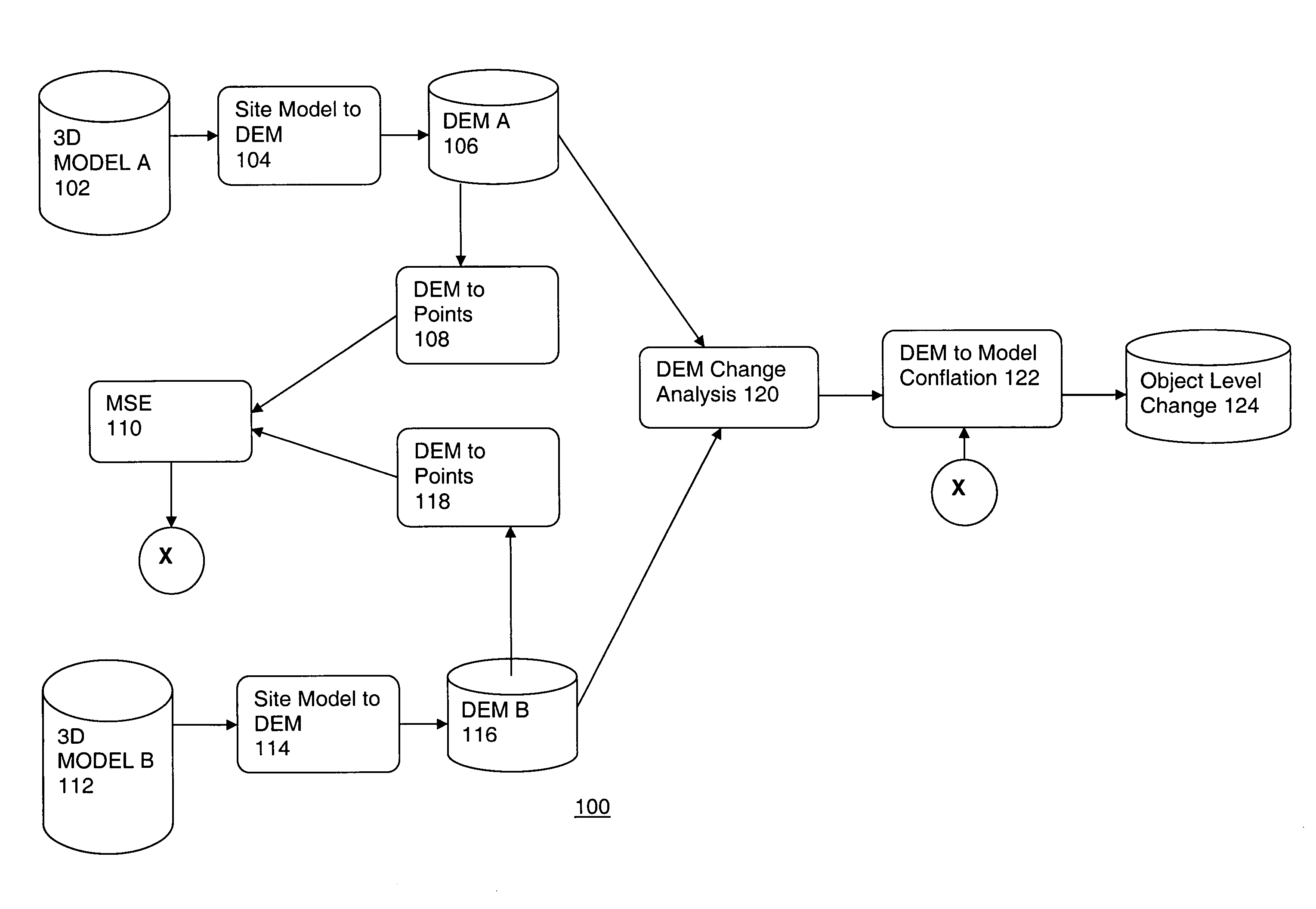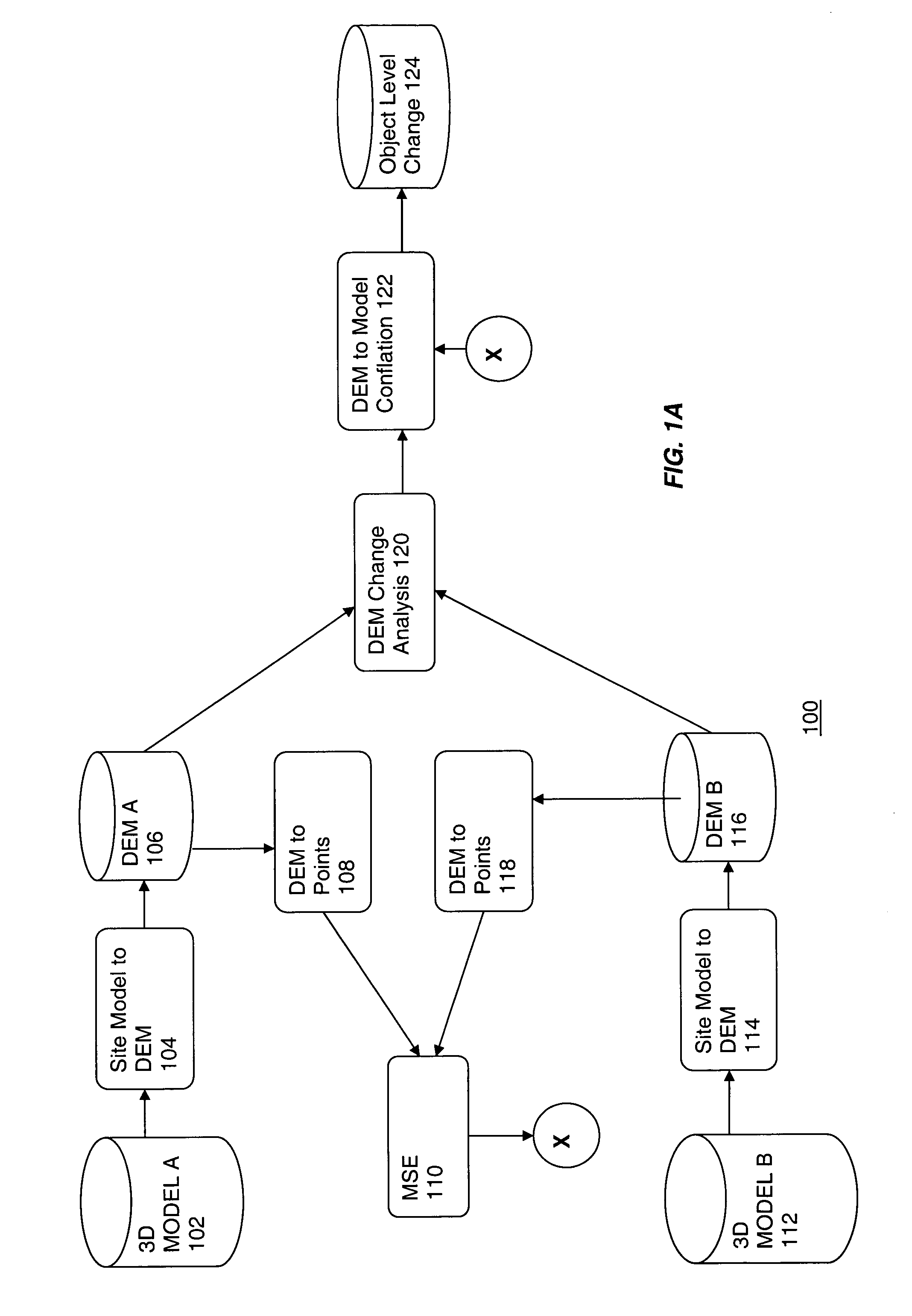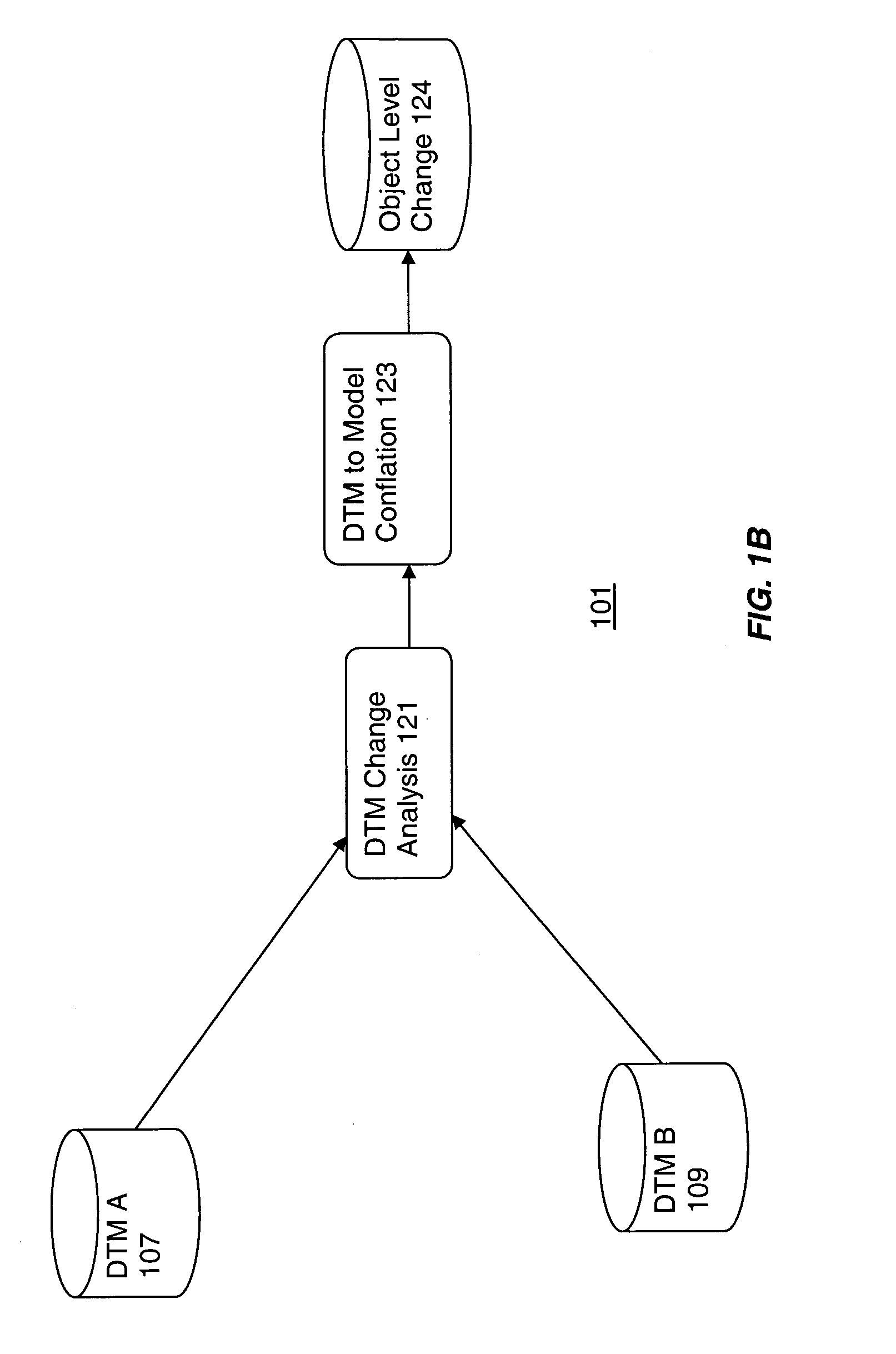System and method for three dimensional change detection and measurement of a scene using change analysis
a three-dimensional change and change analysis technology, applied in the field of image data processing systems, can solve problems such as typically much more labor-intensive production
- Summary
- Abstract
- Description
- Claims
- Application Information
AI Technical Summary
Benefits of technology
Problems solved by technology
Method used
Image
Examples
Embodiment Construction
[0013]FIGS. 1A and 1B illustrate systems and methods 100 and 101, respectively, for detection of one or more differences in 3D scenes represented by digital models created with data collected form the scenes. We discuss an example where the scenes represent a city block comprising buildings and other structures that are represented as objects in their corresponding digital models. Referring first to FIG. 1A, the system 100 receives first 102 and second 112 (or 3D Model B) digital models of a three dimensional scene such as a city block (see FIG. 2). We use the term “city block” as a generic description, though the approach applies to any geospatial region of the Earth whether urban or rural or having a large or small extent. In this embodiment, the first digital model is a three-dimensional (3D) polygonal model 102 (or 3D Model A) and the second digital model is a 3D polygonal model 112, each representing a different scene (A or B). Each of the polygonal models 102 and 112 comprises...
PUM
 Login to View More
Login to View More Abstract
Description
Claims
Application Information
 Login to View More
Login to View More - R&D
- Intellectual Property
- Life Sciences
- Materials
- Tech Scout
- Unparalleled Data Quality
- Higher Quality Content
- 60% Fewer Hallucinations
Browse by: Latest US Patents, China's latest patents, Technical Efficacy Thesaurus, Application Domain, Technology Topic, Popular Technical Reports.
© 2025 PatSnap. All rights reserved.Legal|Privacy policy|Modern Slavery Act Transparency Statement|Sitemap|About US| Contact US: help@patsnap.com



